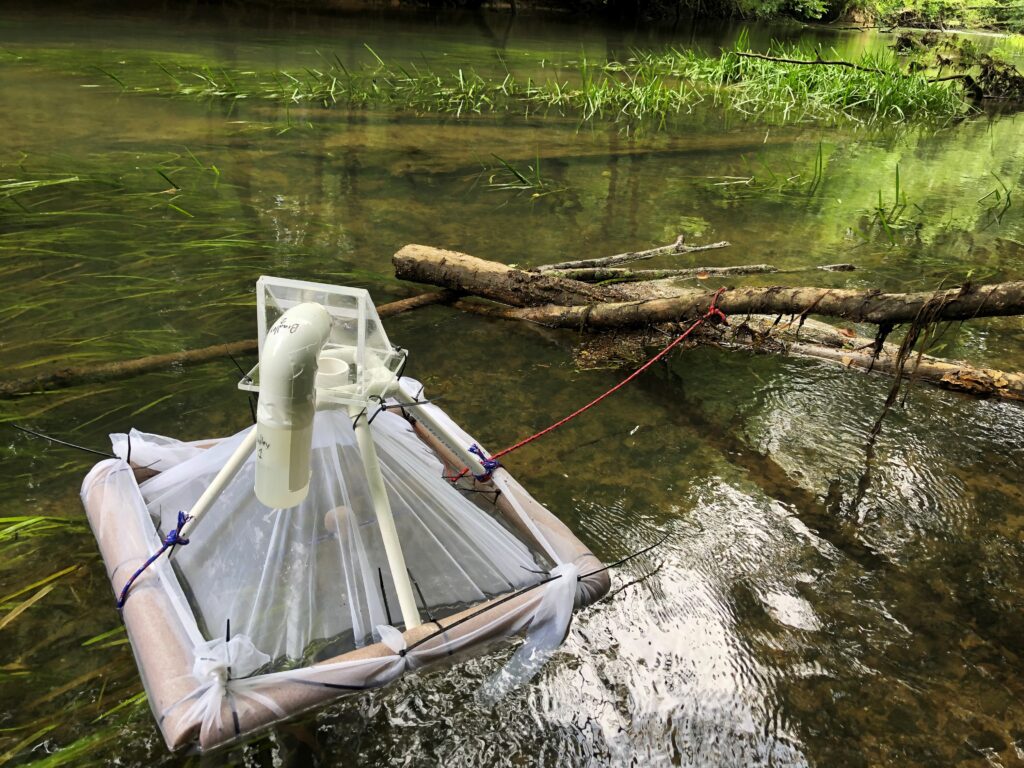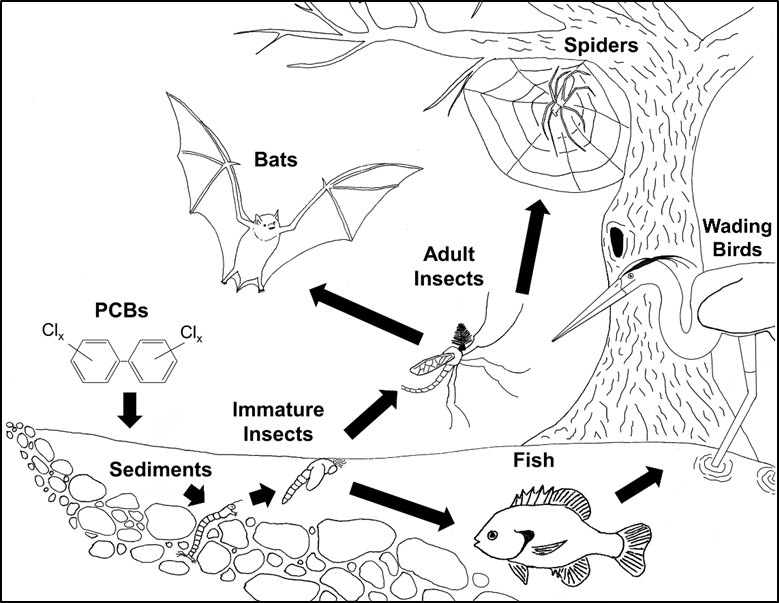
Polychlorinated biphenyls (PCBs) are chlorinated hydrocarbons that were used extensively in the electricity industry as insulating or cooling agents in transformers and capacitors (Abramowicz 1990). Although production was halted in 1979, PCBs persist in the environment, accumulate in food webs, and negatively impact wildlife by reducing reproduction rates, survivorship of offspring, and inducing cancer. Although PCBs are widespread, the areas surrounding industrial areas such as US Air Force bases still contain large quantities of PCBs that have been dispersed outward from the source by rain and sediment movement. Streams that drain these areas, such as those surrounding Arnold Air Force Base (AAFB) near Tullahoma, Tennessee, can contain high PCB concentrations in the sediments.
The forests and streams around AAFB contain a high diversity of wildlife and fishes, including imperiled species such as the federally endangered gray bat (Myotis grisenscens) and gopher frog (Lithobates capito), as well as several other at-risk salamanders, fish, mussels, and invertebrate species. Concern for PCB contamination has resulted in studies monitoring PCB biomagnification in fish from Woods Reservoir. Tests for PCBs in gray bat tissues from across the region show bats living on AAFB have PCB levels approximately 10 times higher that bats residing in nearby areas of Tennessee and Kentucky. Dietary sources are likely a key driver of PCB accumulation in this population of bats. Given gray bats utilize stream insects as a significant food source, it is likely the bats are receiving PCBs from these insects. As winged-adults, freshwater insects can transport PCBs sequestered as larvae to terrestrial consumers, such as riparian spiders, birds, and bats as they emerge from the stream, or transfer PCBs to aquatic consumers such as fish or amphibians.
There is a critical need to better understanding how contaminants move across aquatic/terrestrial boundaries and into all parts of a food web. Determining the mechanisms of PCB accumulation and rates of transfer, particularly into surrogate species of endangered gray bats and gopher frogs will provide AAFB biologists insight on how to limit future exposure of these harmful chemicals that will continue to persist for decades. Currently, we know that PCB aquatic/terrestrial transfer pathways exist, but we know little about how much is transferred, how PCB levels vary among different emerging insect species, or how much PCB is retained between the juvenile and adult insect stages. We also do not know which consumers, e.g., bats, birds, fish, amphibians, etc., are at risk for accumulating a detrimental amount of PCBs from streams, or the environmental conditions that promote high or low rates of PCB transfer to consumers. These data will provide the foundation for a risk-assessment of AAFB at-risk species that are in need of more holistic conservation efforts.
